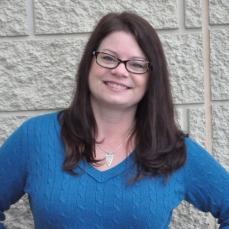Breaking Silos: Standardizing Accounting Methodologies in a Catholic Diocese

The Catholic Church runs the largest network of private schools in the United States, with thousands of primary and secondary schools across hundreds of Catholic dioceses and archdioceses. Each diocese may be divided into multiple parishes which operate the schools. This means that one diocese may have dozens of schools, siloed by parish, each operating differently and tracking tuition revenue, donations, and expenses in different ways. As a result, the diocese itself may have trouble getting a pulse on its financial health.
As Catholic schools address enrollment and fundraising challenges and rising operating costs, it becomes critical to break down those silos and standardize accounting practices and systems within a diocese. Consistent accounting and financial practices throughout a diocese can lead to better reporting, communication, and idea-sharing from school to school and give diocesan leaders a more holistic, accurate, and reliable view of their operations.
Mind the GAAP
At a minimum, every school should ensure compliance with the Generally Accepted Accounting Principles (GAAP or US GAAP). The purpose of GAAP is to ensure that financial reporting is transparent and consistent from one organization to another. Enacted by the Financial Accounting Standards Board (FASB) this guidance applies to all private, public, and nonprofit companies operating in the United States. Implementing GAAP standards across a diocese will ensure financial transparency and continuity and enable sound, evidence-based decision-making.
While each private school operates differently and has its own unique needs, a diocese should have a strong understanding of its cash flow—including the money that comes into and goes out of its schools. The only way to accomplish that is for each school in that diocese to book accounts receivable, such as tuition and donations, in the same way. Those schools should also use standardized methodologies for accounts payable, such as salaries and other operating expenses. Private schools rely on tuition and donations to pay for expenses. They often look at projected tuition revenue when pulling reports or setting budgets. If a diocese doesn’t have transparency into what tuition and pledges have actually been collected as opposed to projected, and the payments going out of each school’s accounts, it may not know if it can meet short- and long-term financial obligations.
Get an Enterprise View
Once a diocese has established consistent processes, it may want to standardize the software used for accounting, financial aid, fundraising, and tuition management across its schools to provide greater transparency for all stakeholders at the diocesan, parish, and school levels. When financial software is standardized, each school can generate the same reports, which can then aggregate into an enterprise view of the financial health of the diocese.
Another thing to consider is what some software systems call “view-only access.” When accounting, financial aid, and tuition management systems integrate properly, they should allow users of one system to see into another. For example, a K-12 school’s financial aid office would benefit from view-only access into that school’s tuition management tool. This would allow them to see if a family receiving financial aid has been able to pay their discounted tuition, or if they are in arrears. That knowledge would enable them to determine which families may require mid-year awards and to better plan for the next financial aid season.
Involve All Stakeholders
General ledger systems are the center of every accounting office. In the case of schools, specialized billing systems, often referred to as “subsidiary accounts receivable ledgers,” are designed to assist with managing the collection of tuition and, in certain systems, the recognition of the related revenues. Fundraising, financial aid, and tuition management software systems vary in functionality and integration capabilities to any given general ledger system. It is critical to consider that integration capability and to document system requirements when looking at software solutions.
To further break down silos and ensure standard accounting practices are followed and software is utilized as intended, each diocese should gather input from all relevant internal stakeholders who use these systems—including Heads of School, Admissions, Advancement, IT, and Business Offices—before choosing these important solutions. When stakeholders have a say in important decisions, they are more likely to follow new practices and even champion them with coworkers.
Keep Your Goal in Sight
The end goal of these exercises should be a streamlined collection and financial statement process that adheres to GAAP, provides insight into net tuition revenue, fundraising, and spending habits, breaks down silos among departments and parishes, and gives the diocese the visibility it needs to make sound financial decisions.
Learn more about integrated accounting, tuition, financial aid, and fundraising management solutions from Blackbaud.



